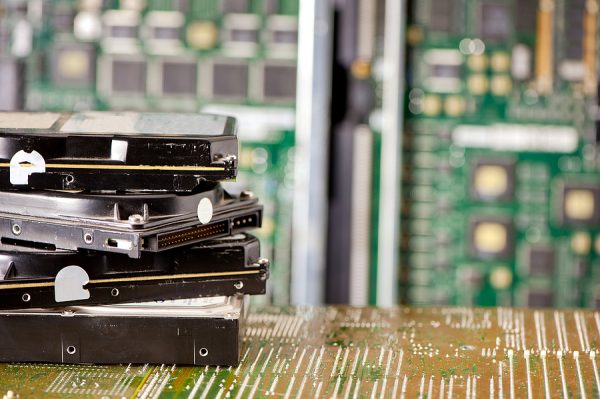
Ghosts and zombies aren’t only found in horror movies—they may also be terrorizing your business. It’s imperative that you understand how to identify ghost and zombie assets, why you should worry about them, and how you can get rid of them to protect your customers and business.
Ghost vs. Zombie Assets
Ghost assets are assets that are on your books, but are either unusable or no longer in the workplace. For example, let’s say you determine that a computer is no longer usable, so you send it to an e-waste recycler for destruction. But, you forget to tell your accountant that the asset will no longer be in the workplace. By doing this, you have created a ghost asset that will continue to show up on your records even though it is no longer in the workplace.
On the other hand, a zombie asset is an asset that is present in the workplace, but not registered on your books. Examples of ghost and zombie assets include smartphones, laptops, desktop computers, and any other IT equipment used in the workplace.
How Common Are Ghost and Zombie Assets?
Many organizations struggle to keep accurate records of their assets. In fact, one study conducted by Asset Works found that 35% of assets in an organization’s inventory are considered ghost assets, and another 12% are considered zombie assets. This means that nearly 50% of assets belonging to the organizations that took part in this study were either ghost or zombie assets.
Unfortunately, another study found that 74% of small business owners do not understand how these assets could impact their books and affect their business. If they don’t understand the consequences of ghost and zombie assets, it’s unlikely that these business owners will be motivated to address this issue.
Why You Should Worry About Ghost and Zombie Assets
Ghost and zombie assets are a huge security and financial risk. Why? Let’s start with ghost assets. If an asset is still listed on your books, but no longer in the workplace, where is it? Companies with ghost assets don’t know if the asset has been misplaced, stolen, or sent to a third party e-waste recycler for destruction. If you don’t know where the asset is, it’s impossible for you to protect whatever confidential data may be on it.
Also, including assets on your books that are no longer in use is hurting your company financially. Ghost assets are artificially inflating the value of your company by making it appear that you have more usable assets than you actually do. Therefore, by removing ghost assets from your books, you can lower taxes and insurance rates.
Ghost assets can also make it harder for your employees to get what they need to perform their job duties. For example, your employees may need new computers to do their jobs, but if you have ghost assets listed in your books, you may not be able to justify purchasing new equipment. Management may be unwilling to purchase new assets after reviewing the inflated numbers that are recorded in your books.
What about zombie assets? If you have an asset that is being used in the workplace, but not accounted for on your books, how will you track it? Companies should track every single asset they own from the time that it is purchased until it is destroyed. This is the only way to ensure that the sensitive data stored on the assets is protected the entire time it is in your company’s possession. But, zombie assets are not being tracked since they are not listed on your books. When it’s time to dispose of a zombie asset, you may forget to track it while it is being destroyed because you will have no record that the asset ever existed.
Adding zombie assets to your books will increase your company’s reported assets and therefore increase the amount you pay in taxes and insurance. But, you should not avoid updating your records just so you don’t have to pay more.
How to Get Rid of Ghost and Zombie Assets
Now that you know why you should be concerned about ghost and zombie assets, it’s important to learn how to get rid of them. The best way to get the ghosts and zombies out of your workplace is to conduct frequent inventory audits. This will help you maintain an accurate record of which assets are still in use, which need to be disposed of, and which are not accounted for. Once you have completed the first audit, it’s important to maintain your records so you don’t find yourself in the same situation in a few months. Every time new assets are purchased, they should immediately be added to your records. If an asset is no longer usable, your records should be immediately updated to reflect this. By keeping an accurate record of your assets, you can protect the company from financial and security risks.
You should also evaluate the method you are currently using to track your assets. Many smaller companies use a simple spreadsheet to track assets, but this is not recommended. Consider investing in software that your IT asset management and accounting teams can both use together. It’s much easier to update inventory using this type of software, so it will simplify the process for everyone involved.
Once it’s time to dispose of any ghost or zombie IT assets in the workplace, make sure you choose an e-waste recycler that is committed to protecting confidential data. ERI has a number of certifications, including the e-Stewards and NAID AAA certification, that prove we will handle your assets with care and properly destroy all data. For more information on recycling electronics, or to request a quote, contact us today.